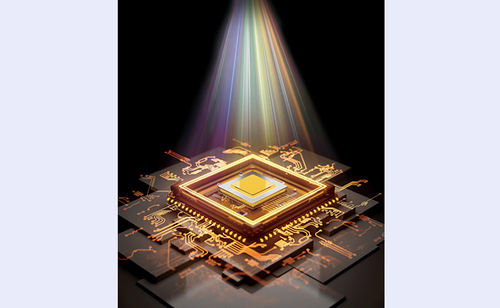Tsinghua University scientists develop efficient all-analog photo-electronic chips
Scientists from China's Tsinghua University have recently created an all-analog photo-electronic chip. This chip delivers superior performance in computer vision tasks, delivering faster processing and greater energy efficiency compared to current chips, according to a report published by Xinhua News Agency.
The research findings, which offer an alternative to conventional technologies relying on analog-to-digital conversion, have been published in the journal Nature.
Analog and digital signals are two types of signals carrying information. Analog signals vary continuously, as with the rays of light forming an image, while digital signals are non-continuous, as with binary numbers, according to Xinhua.
In vision-based computing tasks like image recognition and object detection, signals from the environment are analog, and they need to be converted into digital signals for processing by AI neural networks, systems trained to recognize patterns and relationships in a data set. However, the analog-to-digital conversion is time- and energy-consuming, limiting the speed and efficiency of the neural network's performance. Photonic computing, which uses analog light signals, is one of the most promising approaches to addressing the issue, the report said.
In the new study, the researchers designed an integrated photoelectronic processor to harness the advantages of both light, in the form of photons, and electrons, as found in electric currents, in an all-analog way. The result is called an "all-analog chip combining electronic and light computing," or ACCEL.
"We maximized the advantages of light and electricity under all-analog signals, avoiding the drawbacks of analog-to-digital conversion and breaking the bottleneck of power consumption and speed," said Fang Lu, a researcher from the Tsinghua team.
Tests showed that ACCEL is able to recognize and classify objects with a degree of accuracy comparable to those of digital neural networks. Furthermore, it classifies high-resolution images of various scenes of daily life more than 3,000 times faster and with 4,000,000 times less energy consumption than a top-of-the-line GPU (graphics processing unit).
Dai Qionghai, director of the School of Information Science and Technology at Tsinghua University, said in the report that ACCEL has the potential for future applications in areas such as unmanned systems, industrial inspections, and large-scale artificial intelligence models.
However, at the moment, the team has only developed prototype samples based on the principles of optical-electronic integration for specific computing functions. This indicates that the chip is still in the prototype stage and not yet ready for practical use. Further research and development are urgently needed to create intelligent visual computing chips with general-purpose functionality for broad real-world applications, Dai said.
"The research breakthrough may also indicates a possibility of reduce of reliance on photolithography machines," an industry analyst, who requested anonymity, told the Global Times on Sunday.

